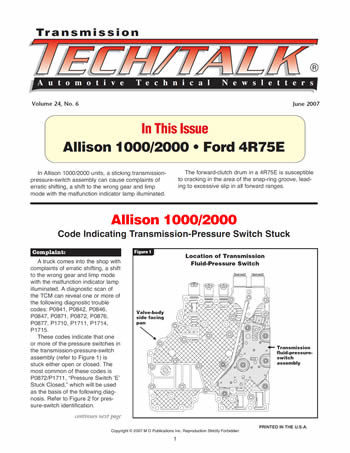

Issue Summary:
- In Allison 1000/2000 units, a sticking transmission-pressure-switch assembly can cause complaints of erratic shifting, a shift to the wrong gear and limp mode with the malfunction indicator lamp illuminated.
- The forward-clutch drum in a 4R75E is susceptible to cracking in the area of the snap-ring groove, leading to excessive slip in all forward ranges.


A truck comes into the shop with complaints of erratic shifting, a shift to the wrong gear and limp mode with the malfunction indicator lamp illuminated. A diagnostic scan of the TCM can reveal one or more of the following diagnostic trouble codes: P0841, P0842, P0846, P0847, P0871, P0872, P0876, P0877, P1710, P1711, P1714, P1715.
These codes indicate that one or more of the pressure switches in the transmission-pressure-switch assembly (refer to Figure 1) is stuck either open or closed.
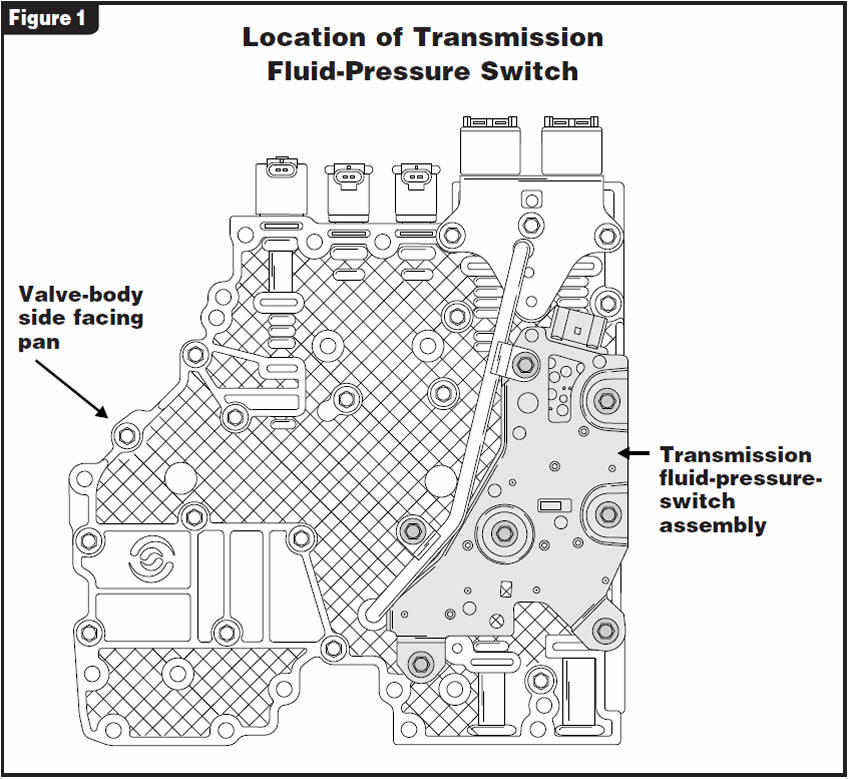
The most common of these codes is P0872/P1711, “Pressure Switch ‘E’ Stuck Closed,” which will be used as the basis of the following diagnosis. Refer to Figure 2 for pressure-switch identification.
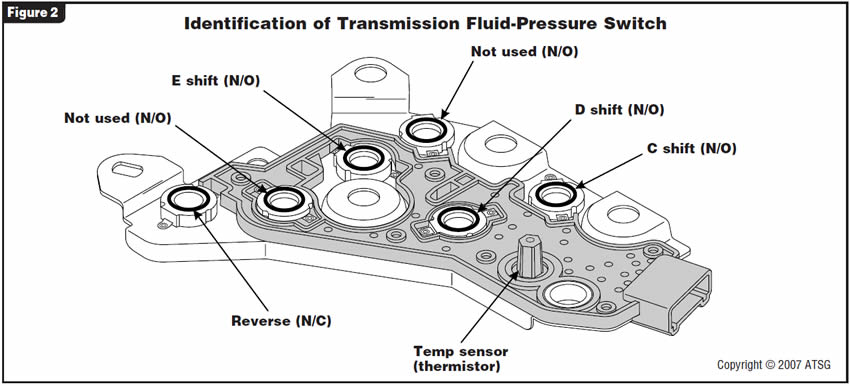

The P0872/P1711 code signifies that the E pressure switch is indicating a signal that is different from the commanded position of the E shift valve. Unlike, for example, a 4L80-E, which uses oil directed from the manual valve to open and close the pressure switches, the Allison 1000/2000 series uses oil directed from the shift valves to accomplish that task. Figure 3 shows the valve-body passages that feed the pressure switches. The only pressure switch in the Allison that uses oil from the manual valve is the reverse pressure switch.
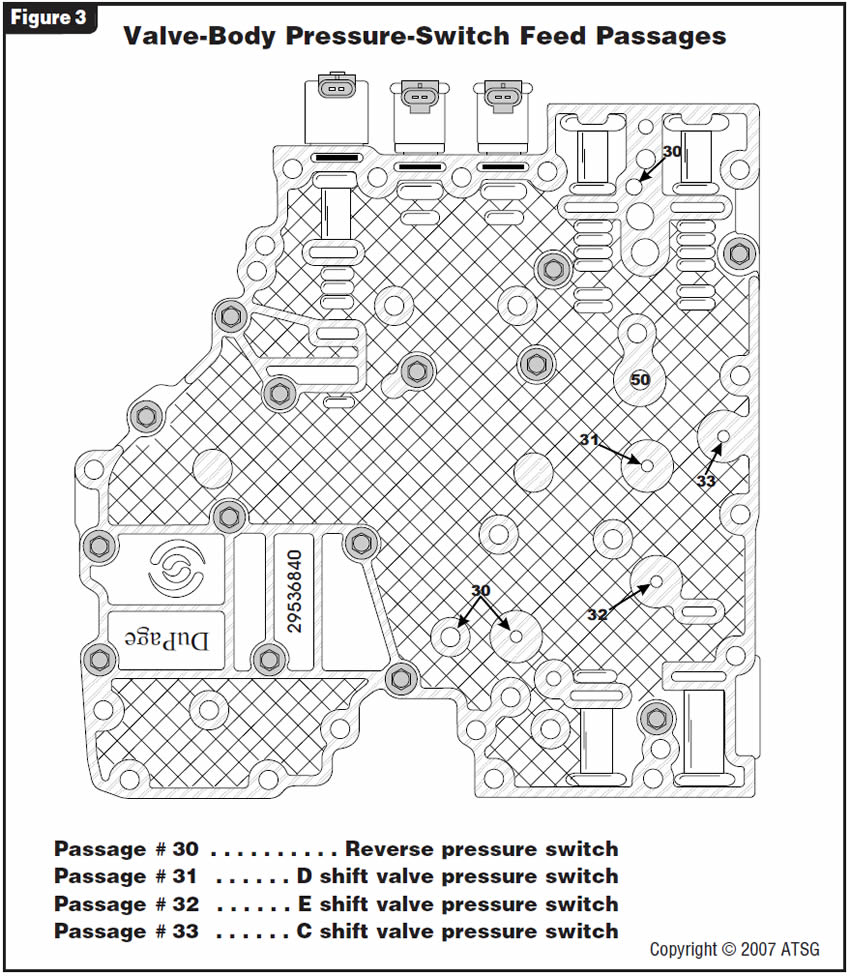
Refer to Figure 4 for “worm-track” identification.
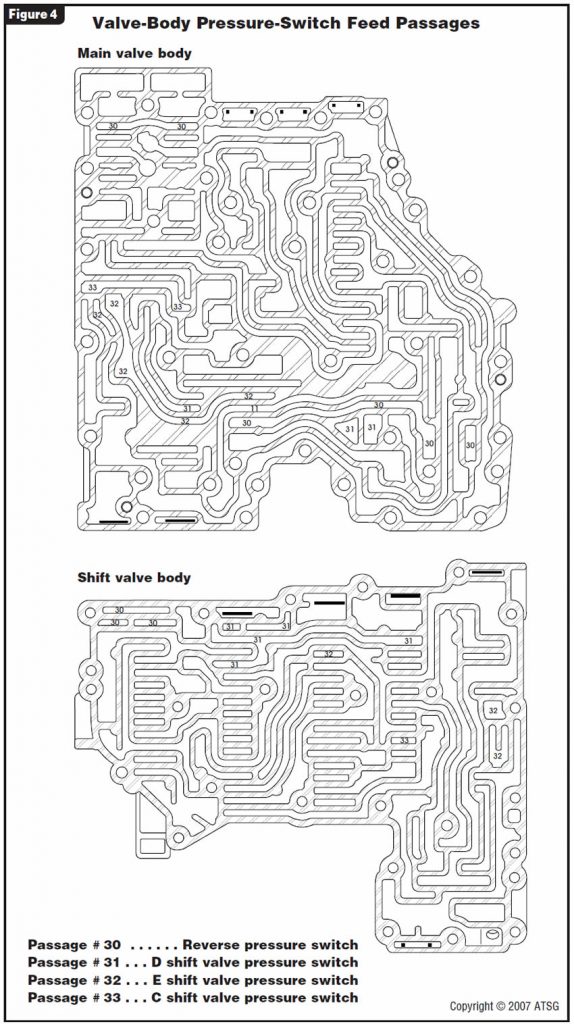
This means that there could be a mechanical problem with shift solenoid E, shift valve E is stuck or the E pressure switch is stuck closed. The same could be true with shift solenoids C and D as well as shift valves C and D when you’re diagnosing other pressure-switch codes. So, the way the diagnostic course goes is that shift solenoid controls shift valve and shift valve operates pressure switch (except for reverse). Refer to figures 5 and 6 for solenoid and valve identification.
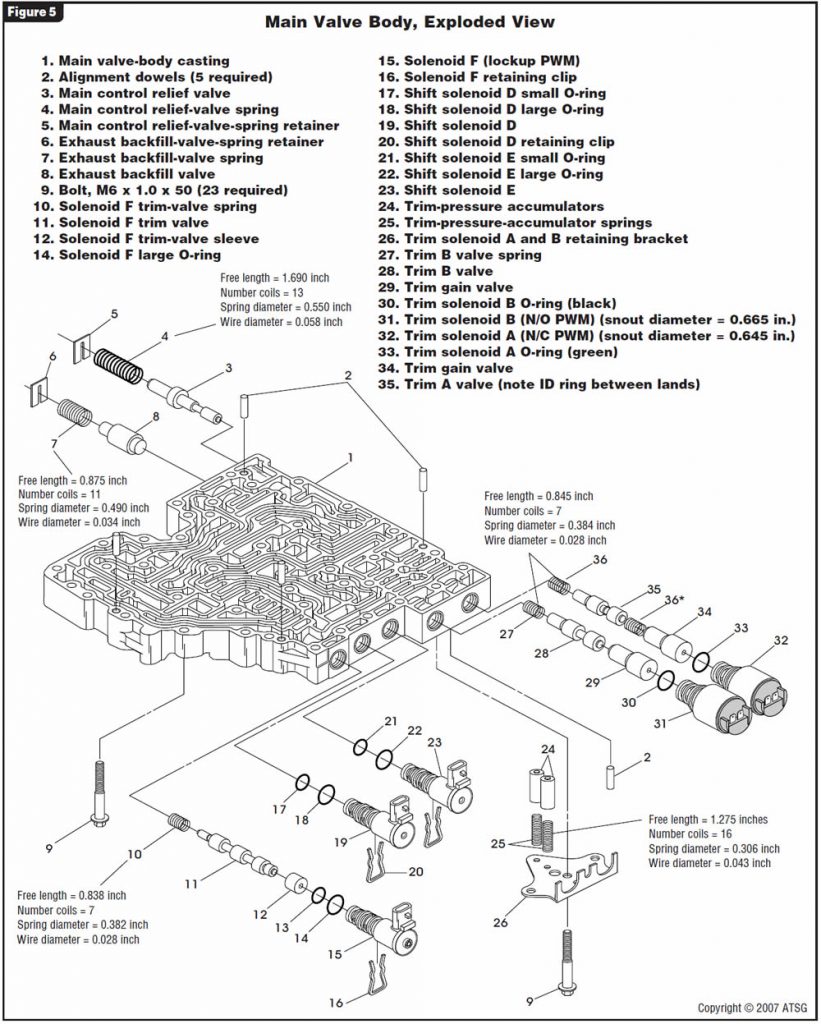
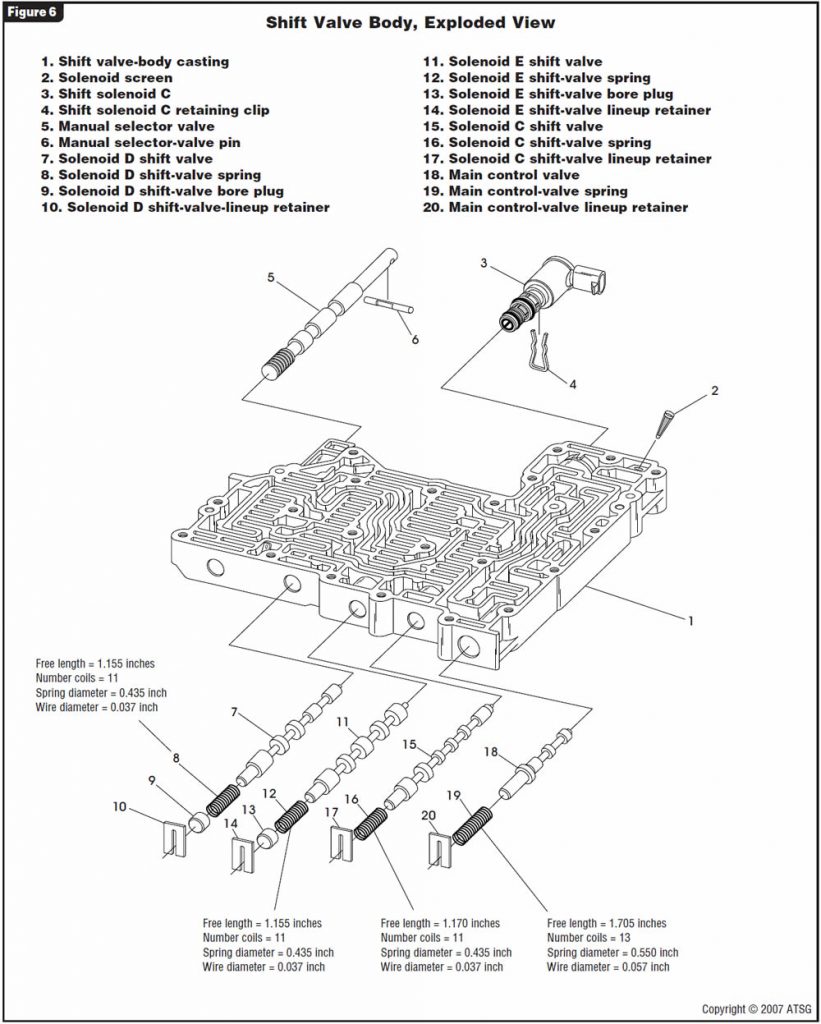

When diagnosing code P0872/P1711, start by checking the pressure-switch-assembly ranging by comparing the PSA range chart in Figure 7 with the ranging on the scan-tools data list. The chart indicates both switch status and scan-tool parameter status.
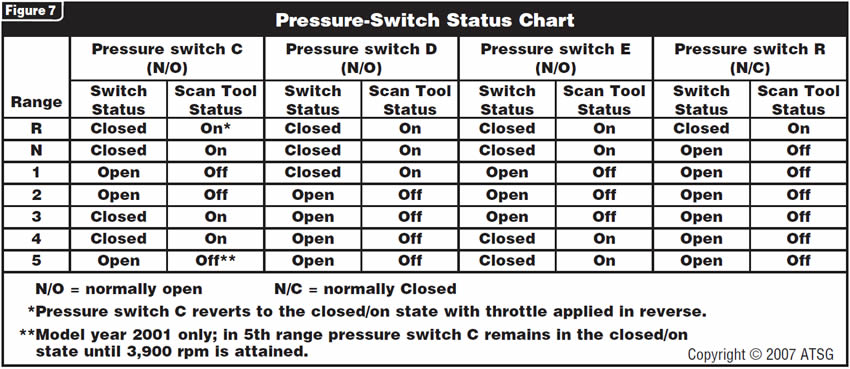
Since shift solenoids C, D and E are identical, one can be switched with the other to see whether the solenoid is causing the pressure-switch code. The shift valve is either stuck or not, and you can check the pressure-switch assembly for mechanical operation on the bench by connecting an ohmmeter to the switch terminals and physically pushing on the switch and releasing it while watching the meter to see whether it changes from an open to a closed state (see Figure 8).
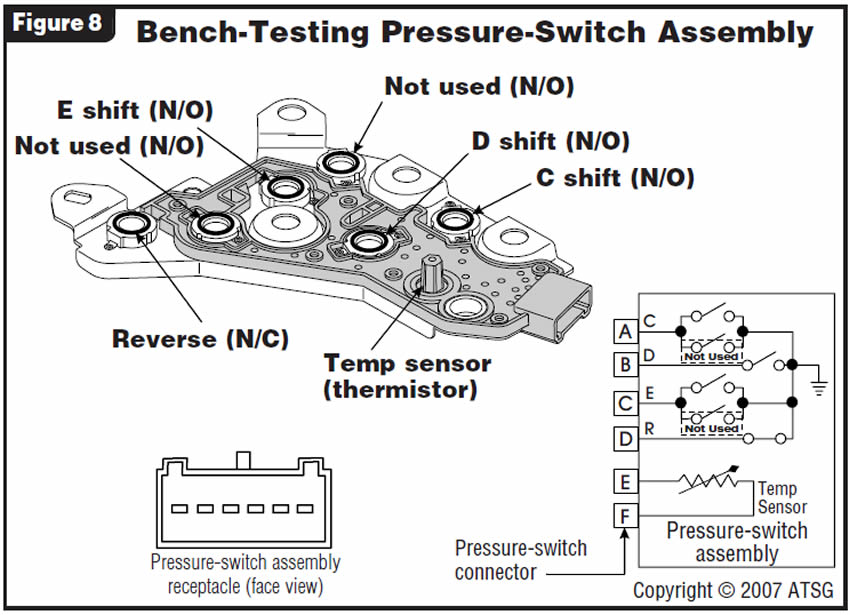

There is much confusion between wiring diagrams and scan-tool parameter displays concerning the pressure-switch identification. Referring to Figure 9, notice that the pressure-switch electrical circuits are labeled A, B, C and D, but the pressure-switch identification is pressure switches C, D, E and R. Be careful not to confuse this.
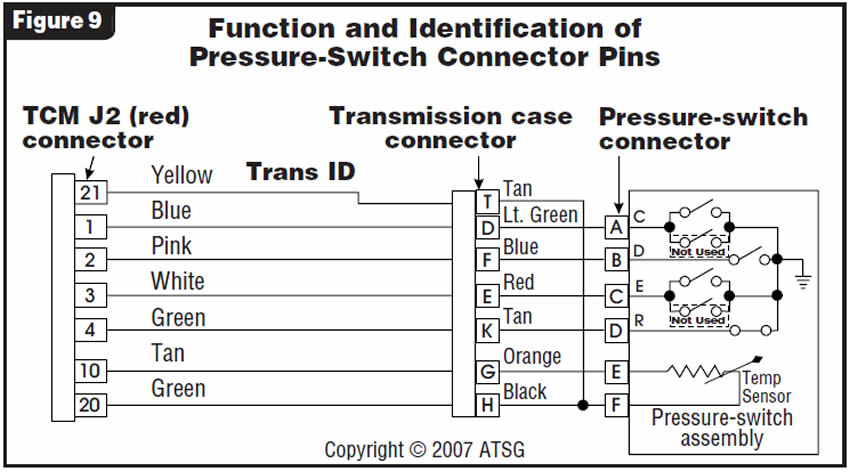
Important Note: A faulty neutral-safety back-up (NSBU) switch can cause P0872/P1711 to be stored falsely. Refer to Figure 10 for the NSBU-switch logic chart.
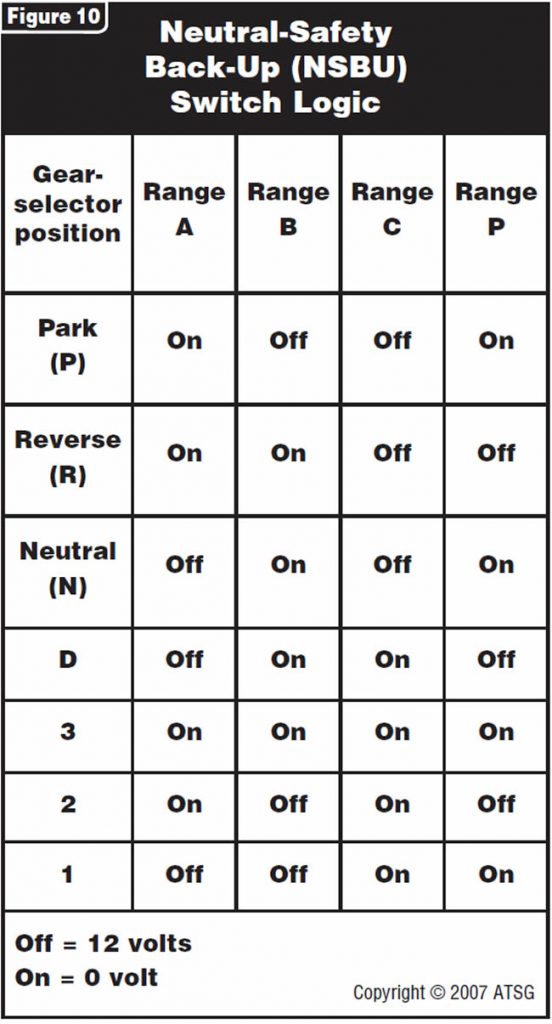




Excessive slip in all forward ranges; possible metal debris found in sump.

Cracked forward-clutch drum, along the snap-ring groove area as shown in Figure 11. The metal debris found in the transmission sump is the result of the pressure plate of the forward-clutch drum hitting the inside area of the drive shell. Upon disassembly of a 4R75E, you may find no debris in the sump but the forward clutches may be scorched. The crack along the snap ring-groove may not be easy to see; check by placing a screwdriver or scribe in the snap-ring groove and slightly prying to reveal any failure in this area.
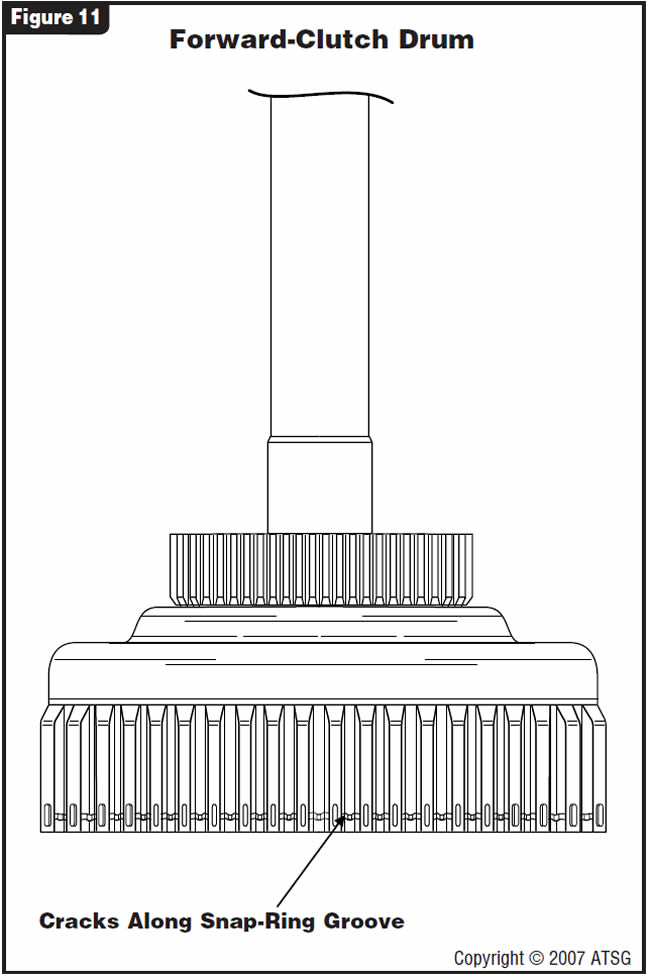

- Replace forward-clutch drum
- Recalibrate the PCM with program # 06B06.

- Forward-clutch drum . . . . . .3L3Z-7F207-AA
- In April 2006, Ford Motor Co. issued a newsletter to vehicle owners with the vehicle identification number listed in the letter. The letter says this failure is caused by the powertrain control module’s shift-timing strategy during excessive 4-3 downshifts that may occur during certain driving conditions (city taxi driving). Ford provided a customer-satisfaction program, #06B06, that would recalibrate the PCM with a revised transmission shift-control strategy free of charge through Aug. 22, 2006, regardless of mileage.
Once this update was completed, an extended-coverage program, #06N06, for certain 2005-2006 Crown Victoria long-wheelbase vehicles replaced the forward-clutch cylinder, also free of charge. The program extends coverage of the forward-clutch cylinder to 3 years or 150,000 miles from the start date of the vehicle warranty, whichever occurs first. It is a one-time-replacement program. This program covers certain vehicles that were built at the St. Thomas Assembly Plant from Job #1 2005 through February 26, 2006. Coverage is also transferred automatically to second owners.
If the vehicle owner already had paid to have the forward-clutch drum repaired before receiving the newsletter, a refund would be provided under program #06N06 when a paid original receipt was presented to the local dealer before May 22, 2006. Even if the forward-clutch drum was replaced, the vehicle owner still needed to have program #06B06 performed to update the PCM transmission shift-control-strategy calibration.
Note: ATSG has received several tech calls on vehicles not listed or covered under this customer-satisfaction program that are showing up in shops with the same failure of the forward-clutch drum. We also have found that on some of these vehicles with as little as 35,000 miles, the valve body would have severe wear in the bore of the pressure-regulator valve. This also can cause failure of the forward-clutch drum because of pressure spikes (see Figure 12).
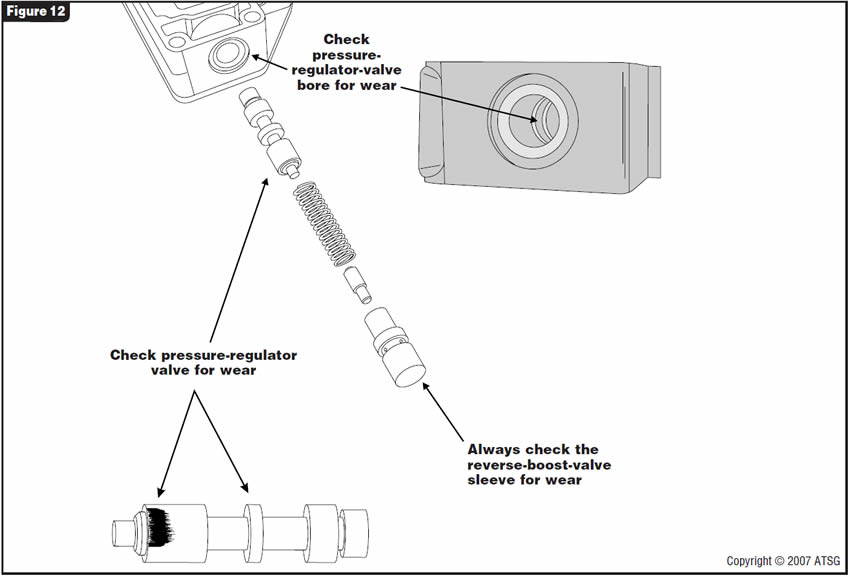


June 2007 Issue
Volume 24, No. 6
- Allison 1000/2000: Code Indicating Transmission-Pressure Switch Stuck
- Ford 4R75E: Excessive Slip in Forward Ranges

